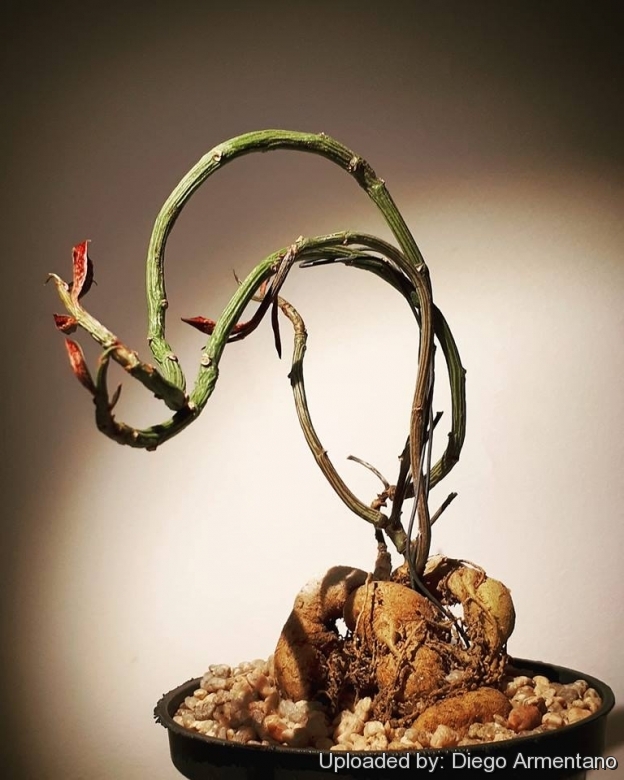
Euphorbia neorubella Photo by: Diego Armentano
Origin and Habitat: Kenia (Machakos Distrct). It is known from the type locality only.
Altitude range: Around 1529 metres above sea level.
Habitat: It grows among rock.
Synonyms:
Common Names include:
ENGLISH: Red Monadenium Bonsai Tree, Red Monadenium
CHINESE (中文): 紅翡翠花
JAPANESE (日本語): ルベルム
Description: Long cultivated under the synonym Monadenium rubellumSN|28016]]SN|28015]], Euphorbia neorubella is an odd caudiciform plant with dainty branched stems looking like a colony of twisting, light-green snakes and succulent lanceolate leaves dappled in purple. This perennial, succulent herb is interesting not only because of its ‘round foot’, but also because it flowers pretty much year around, and doesn't seem to need a dormant period. This ‘round foot’ is where it stores its water reserves that are its stock for dry periods. M. rubellum is particularly priced by the specialist collector.
Rootstock (Caudex): Tuberous, swollen, semi-woody, single turbinate or obovoid, more often quite free-formed with multiple sections, about 8 cm long and 1.5 cm across. In habitat the fat rootstock grows buried in the ground, but in cultivation, once the tuberous roots develop, the plant is lifted above soil level and replanted with roots exposed making a very showy bonsai-like specimen.
Stem: At first upright then decumbent (low growing or droopy), thin, branched at the base. Branches c. 2 mm thick up to 30 (or more) centimetres long with green and red stripes.
Leaves: Sword-shaped, lanceolate, leathery green marked with red/burgundy stripes 2.5-4 cm long, 0.4-1 cm wide, acute on both ends, entire, tinged purple beneath; nerves inconspicuous. Petioles 1-2 mm long. Stipules scale-like, 1- to 4- dentate, brown.
Flowers (cyathia): Up to 15 mm long, axillary, solitary, small, pale or dark pink that resemble a very exotic type of orchid. The more sunlight it gets, the more red the flowers are. Peduncles to 17 mm long, forked once. Bracts cup, to 6 mm long, 4 mm wide, pink, tinged rose.
Blooming season: It flowers mainly during spring and summer, but it can flower opportunistically whenever growing condition are favourable.
Note: Monadenium rubellumSN|28015]]SN|28015]] was first described as Monadenium montanum var. rubellumSN|28015]]SN|28016]] by P.R.O. Bally in 1959, but raised to the rank of species by Susan Carter in 1987 Bruyns et al (2006) re-arranged the Euphorbia on molecular genetic features and lumped Monadenium with Euphorbia.
Bibliography: Major references and further lectures
1) Urs Eggli “Illustrated Handbook of Succulent Plants: Dicotyledons” Springer, 2002
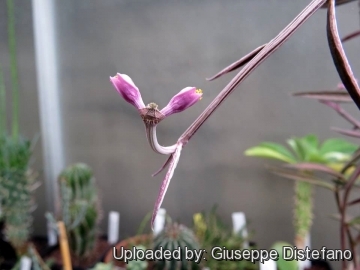 Euphorbia neorubella Photo by: Giuseppe Distefano
Euphorbia neorubella Photo by: Giuseppe Distefano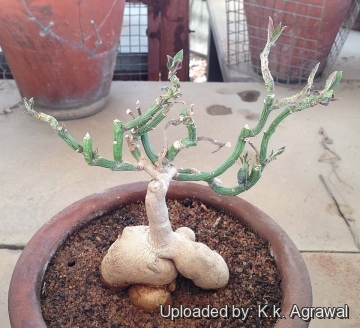 Euphorbia neorubella Photo by: K.k. Agrawal
Euphorbia neorubella Photo by: K.k. Agrawal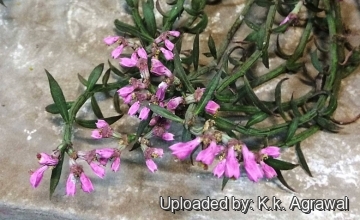 Euphorbia neorubella Photo by: K.k. Agrawal
Euphorbia neorubella Photo by: K.k. Agrawal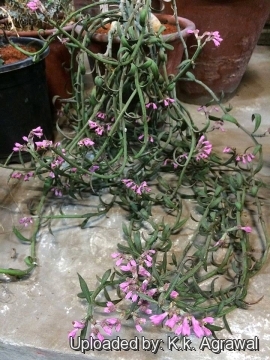 Euphorbia neorubella Photo by: K.k. Agrawal
Euphorbia neorubella Photo by: K.k. Agrawal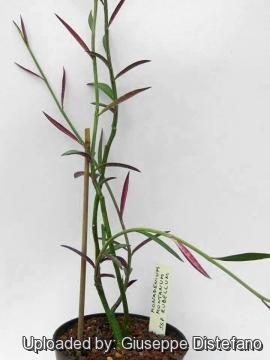 Euphorbia neorubella Photo by: Giuseppe Distefano
Euphorbia neorubella Photo by: Giuseppe DistefanoSend a photo of this plant.The gallery now contains thousands of pictures, however it is possible to do even more. We are, of course, seeking photos of species not yet shown in the gallery but not only that, we are also looking for better pictures than those already present.
Read More... Cultivation and Propagation: Monadenium rubellumSN|28015]]SN|28015]] is easy to care for and this botanical plant can tolerate dry periods well. It can tolerate drought and can be grown indoors. It is best to grow it very hard in the nursery as close to the natural conditions as possible. This ensures that it keeps its compact habit.
Soil: It requires a very free draining enriched soil, mildly acidic to mildly alkaline but is very tolerant of poor soils.
Watering: It needs moderate water during from spring to autumn. A little extra water can be given when it is producing flowers .When the flowers and leaves fall off it enters a period of rest during the winter, keep rather dry then or the plants may rot at the base.After overwintering it will return to its former glory.
Exposure: The plant prefers a lot of light but not direct sunlight. It can also tolerate half shadow. In deep shade it gets pretty weak and leggy and eventually rots and dies.
Caudex exposure: The remarkable tuberous rootstock (caudex) is often raised above the soil line so that this can be seen and more readily appreciated. For best results the tuber must be exposed only when plans become mature enough, usually after several years (8-12 or more years) of underground growth, as the exposed caudex will no longer increase in size once it has been lifted above the soil line.
Maintenance: This species do tend to get sort of leggy, which is particularly a problem if not grown in a suspended basket, and trimming back is often necessary.
Propagation: Seeds/Cuttings. It is easy to propagate by cuttings in late spring to summer, just take a cutting of the plant let it dry for 1 or 2 weeks and stuff it in the ground (preferably dry, loose, extremely well draining soil).
















